RAF Upavon
Trenchard Lines | |||||||||||||||||||
|---|---|---|---|---|---|---|---|---|---|---|---|---|---|---|---|---|---|---|---|
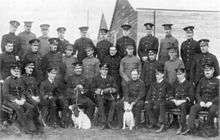 Members and staff on the Central Flying School's first course at Upavon, late 1912 | |||||||||||||||||||
| IATA: UPV – ICAO: EGDJ | |||||||||||||||||||
| Summary | |||||||||||||||||||
| Airport type | Military | ||||||||||||||||||
| Owner | Ministry of Defence | ||||||||||||||||||
| Operator |
Royal Flying Corps 1914-1918 Royal Air Force 1918-1993 British Army 1993 - Present | ||||||||||||||||||
| Location | Wiltshire, England | ||||||||||||||||||
| Elevation AMSL | 574 ft / 175 m | ||||||||||||||||||
| Coordinates | 51°17′26″N 001°46′42″W / 51.29056°N 1.77833°WCoordinates: 51°17′26″N 001°46′42″W / 51.29056°N 1.77833°W | ||||||||||||||||||
| Map | |||||||||||||||||||
 EGDJ Location in Wiltshire | |||||||||||||||||||
| Runways | |||||||||||||||||||
| |||||||||||||||||||
Trenchard Lines is a major British Army headquarters. As the former Royal Air Force Station Upavon, more commonly known as RAF Upavon, it was a grass airfield, military flight training school, and administrative headquarters of the Royal Air Force.
The station motto was In Principio Et Semper, and translated from Latin means "In the Beginning and Always". The station crest had a pterodactyl rising from rocks, which symbolised the station's connection with the early days of flying, and was also a reference to the location of the station near to the ancient monument Stonehenge.
History
Origins and construction
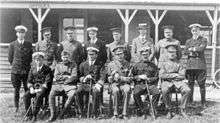
Construction began on 19 June 1912, on some training gallops, on an elevated site about 1.5 mi (2.4 km) east of Upavon village, near the edge of the Salisbury Plain, in the English county of Wiltshire. The RAF site is unusual, in that it is bisected by a public highway, the A342 – with the airfield and hangars on the south side of the road, and all the administrative (and some technical) buildings and accommodation on the north side.
Upavon Airfield was originally created for pilots of the military and naval wings of the newly formed Royal Flying Corps (RFC), and became home to the army Central Flying School (CFS). Captain Godfrey M Paine, RN, became the first commandant, with Major Hugh Trenchard being his assistant. Trenchard later became the chief of air staff, and subsequently became known as the "father of the Royal Air Force".
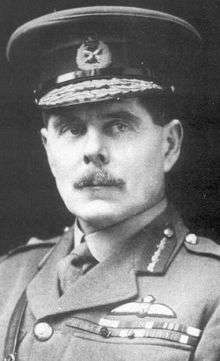
Early flying developments
During 1913 the first night landing made in England was achieved at Upavon, by Lieutenant Cholmondley. At some time during the same year, Winston Churchill, then First Lord of the Admiralty, was a passenger on a flight by a Farman MF.7 biplane while visiting Upavon.
Two officers of the CFS at Upavon developed the bomb sight between 1914–1915, and this was used in a very successful manner at the Western Front. For a short period of time during 1917, Upavon was used as an "air fighting school".
Birth of the Royal Air Force
On 1 April 1918 the Royal Flying Corps became the Royal Air Force, and Upavon became Royal Air Force Station Upavon, commonly abbreviated to RAF Upavon. Accordingly, the former Army Central Flying School became Royal Air Force Central Flying School (RAF CFS). The RAF CFS became the centre of training of all RAF flying instructors.
Upavon is therefore referred to as the "birthplace" of the Royal Air Force.
Aviation "fighting", and air displays
During 1926 the Central Flying School moved from Upavon. At the same time, No.17 (Fighter) Squadron RAF moved to Upavon to join No.3 (Fighter) Squadron RAF, who had been at Upavon since 1924. For the next eight years, the two fighter squadrons developed both night flying and aviation fighting techniques. At the same time, they wooed the public all over the country with impressive air displays. In May 1934, both squadrons left Upavon for RAF Kenley, London, and were replaced at Upavon, for a short time, by four squadrons from the Fleet Air Arm (No.800, No.801, No.820 and No.821).
The St. Raphael
On 31 August 1927 Lieutenant Colonel Frederick F. Minchin, known to his colleagues as 'Dan', Captain Leslie Hamilton, and Princess Löwenstein-Wertheim took off from Upavon airfield in a Dutch Fokker F.VIIA named the St. Raphael in a bid to become the first aviators to cross the Atlantic from east to west.
The St. Raphael was last sighted some 800 mi (1,300 km) west of Galway heading for Newfoundland. The aircraft was never seen again and the fate of Minchin, Hamilton and Löwenstein-Wertheim remains a mystery.
Return of the Central Flying School
During August 1935, the Central Flying School was to return to Upavon. The CFS stayed until April 1942. During this crucial period, the CFSs primary role was to train and supply flight instructors to the now increasing number of military flying schools. Additionally, with the arrival of aeroplanes with more than one engine, a newly required twin-engine syllabus was created.
Royal footsteps
At some time during May 1938, the Monarch of the United Kingdom, His Majesty King George VI visited the CFS at Upavon.
Twenty four years later, military aviation was to mark its 50th anniversary. On 16 June 1962, Upavon held a static, and flying display, and this was attended by Prince Philip.
World War II
During the Second World War, the CFS was moved from Upavon to take up residence at RAF Little Rissington, Gloucestershire. During this time, Upavon simply became a flying training school.
Post-war
Following the end of World War II, Upavon became home to Headquarters No.38 Group. Subsequently, HQ RAF Transport Command arrived at Upavon. For most of the 1950s, No.38 Group disbanded, but during 1960, it reformed again. It became clear that Upavon was simply too small to accommodate two HQs, so a short while after, No.38 Group relocated to RAF Odiham, Hampshire. The newly created headquarters building for transport command was developed throuought the 1960s, and in 1969 a substantial new wing was added. In the intervening years, on 1 August 1967, transport command was renamed Air Support Command.
1970s and 80s, command reorganisation, rename, and amalgamation
The 1970s saw many changes to the overall structure of the Royal Air Force. On 1 September 1972, the former RAF Transport Command, now RAF Air Support Command, was merged with RAF Strike Command. On the same date, No.46 Group was reformed at Upavon, which meant that Upavon was to maintain a long-standing link with RAF transport services.
Amalgamations continued, and on 10 November 1975, No.38 and No.46 groups were merged into one, with No.38 Group keeping the title. At this time, No.38 Group returned to Upavon, and became the largest group in the RAF.
Nearly eight years later, reorganisation was again at the forefront of Upavon. On 17 November 1983, No.38 Group merged with No.1 Group, and Upavon became home to Headquarters No.1 Group RAF.
Towards the millennium and beyond
In its latter RAF years the grass runways were not wholly appropriate for heavy fixed-wing aircraft, nor any kind of jet aircraft, and so the administrative control of aviation for the whole of the RAF developed in strength at Upavon. HQ No.1 Group was a major component of RAF 'life' at Upavon, controlling operations of the large fleet of transport aircraft.
However, aviation, particularly training at Upavon continued, with the grass runways and tarmac taxiways being used for training purposes by various RAF rotary-wing helicopters, and RAF C-130 Hercules. It was also home to gliding, mainly winch launched. The RAF Air Cadets, known as the Air Training Corps, used static winch-launched gliders of No. 622 Volunteer Gliding Squadron (VGS), along with the Army Gliding Association (AGA) Wyvern Gliding Club (which used self-propelled, winch-launched, and aero-towed gliders). These activities still continue at this present time.
Departure of the Royal Air Force
As a result of major reorganisation of the entire structure of the Royal Air Force in the early 1990s, RAF Upavon became surplus to requirements, and the RAF was to permanently withdraw from Upavon. On 3 August 1993, the RAF officially handed over RAF Upavon to the British Army.
Architecture
Many of the buildings at Upavon still stand from its original construction. The officers' mess is a fine example of British military architecture. It was built in 1915, and prior to the RAF's departure from Upavon, was the oldest RAF officers' mess in use. It is designated as a Grade II* listed building.[1]
One of the smaller administrative buildings housed the Trenchard Museum, which contained exhibits and artefacts dedicated to Lord Trenchard, the founder of the Royal Air Force. However the ravages of time were not kind to this building, so a new home had to be found for the artefacts. The contents of the Trenchard Museum were therefore moved to RAF Halton in Buckinghamshire.
Station commanders
Royal Flying Corps
| 1912–1915 | Captain G M Paine CB MVO RN |
| 1915–1916 | Lieutenant Colonel D Le G Pitcher |
| 1916 | Lieutenant Colonel C J Burke DSO |
| 1916–1917 | Captain A C H MacLean |
| 1917–1918 | Lieutenant Colonel A J L Scott MC |
Royal Air Force
| 1918 | Major J C Slessor |
| 1918–1919 | Captain H Maintjes MC |
| 1919 | Lieutenant Colonel P H L Playfair MC |
| 1919–1920 | Wing Commander C D Breese AFC |
| 1920 | Wing Commander P K Wise CMG DSO |
| 1920–1922 | Wing Commander N D K MacEwen CMG DSO |
| 1922–1923 | Air Commodore E A D Masterman CMG CBE AFC |
| 1923–1925 | Group Captain F V Holt CMG DSO |
| 1926–1926 | Group Captain W R Freeman DSO MC |
| 1926–1928 | Wing Commander V S Brown |
| 1928–1930 | Wing Commander W R Read MC DFC AFC |
| 1930–1932 | Wing Commander E W Norton DSC |
| 1932–1934 | Wing Commander G S M Install VC MC |
| 1934–1935 | Wing Commander A D Pryor |
| 1935–1936 | Group Captain H G Smart CBE DFC AFC |
| 1936–1939 | Group Captain J M Robb DSO DFC |
| 1939–1940 | Wing Commander D W F Bonham-Carter |
| 1940 | Wing Commander G H Stainforth AFC |
| 1940 | Air Commodore J M Robb DSO DFC |
| 1940–1942 | Group Captain H H Down AFC |
| 1942–1944 | Group Captain A J Holmes AFC |
| 1944–1946 | Group Captain E A C Britton DFC |
| 1946 | Squadron leader Parker |
| 1948 | Squadron leader W McGregor |
| 1948 | Squadron leader S J Rawlins |
| 1950–1951 | Squadron leader M P Thompson |
| 1952–1954 | Squadron leader D T Lees MC |
| 1954–1956 | Squadron leader L J Hill |
| 1956–1958 | Squadron leader K H Steel OBE |
| 1958–1959 | Squadron leader C G Lewis |
| 1959–1961 | Squadron leader R P James MBE |
| 1961–1964 | Squadron leader R R McGowan AFC |
| 1964–1966 | Squadron leader T A Warren |
| 1966–1969 | Squadron leader N Comber |
| 1969–1971 | Squadron leader M Gill |
| 1971–1973 | Squadron leader H C Burrows |
| 1973 | Group Captain R S Bradley |
| 1973–1974 | Wing Commander J R Shepherd |
| 1974–1975 | Wing Commander W G Wood |
| 1975–1977 | Squadron leader J E Dixon |
| 1977–1979 | Squadron leader A R J Pascall |
| 1979–1980 | Squadron leader R A Betterldge |
| 1980–1983 | Squadron leader M Pritchard |
| 1983–1986 | Squadron leader K W Baldock |
| 1986–1989 | Squadron leader D N Barnes |
| 1989–1991 | Squadron leader C F Shaw |
| 1991–1993 | Squadron leader R I Clifford MIMgt |
Aircraft
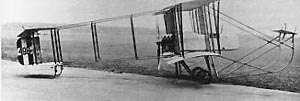
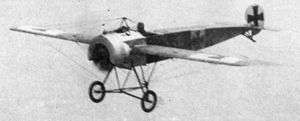
Squadrons
- No. 3 Squadron RAF
- No. 17 Squadron RAF
- No. 800 Squadron FAA
- No. 801 Squadron FAA
- No. 820 Squadron FAA
- No. 821 Squadron FAA
- No. 622 Volunteer Gliding Squadron RAF
Today
Today, there is one RAF unit on this site. The UK Air Support Operation Centre (ASOC) moved to Upavon in November 2010. The UK ASOC is at the heart of Air Land Integration for the UK military and is responsible for execution of missions in direct support of land forces. The UK ASOC has been deployed in Afghanistan for over seven years and is responsible for the execution of close air support missions across the country. No. 622 Volunteer Gliding Squadron, training cadets on the Viking TX1 glider, is also located at Upavon. The airfield is still used for training purposes by visiting RAF aircraft, and for gliding by No. 622 VGS and the Wyvern (Army) Gliding Club.
From late 1993, it became a British Army garrison called Trenchard Lines. When the army initially moved into Upavon, it became home to Headquarters Doctrine & Training. On 30 January 1995, it then became Headquarters Adjutant General. In April 2008[2] the base was absorbed within the newly formed HQ Land Forces.[3]
See also
| Wikimedia Commons has media related to Royal Air Force. |
| Wikimedia Commons has media related to Aircraft of the air force of the United Kingdom. |
References
External links
- Gallery of Upavon images, past and present from ServicePals.com
- 622 Volunteer Gliding Squadron
- Wyvern Gliding Club
